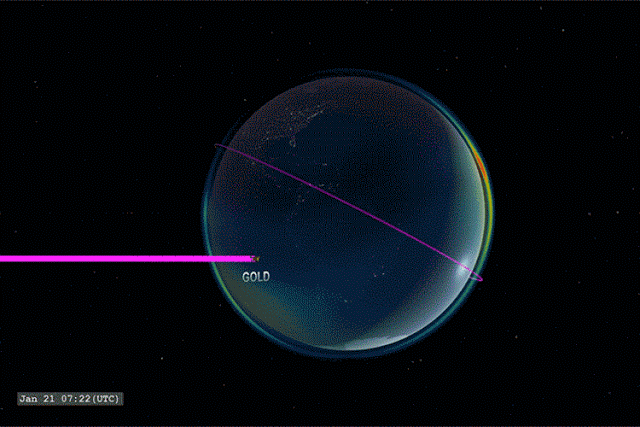

| Online: | |
| Visits: | |
| Stories: |

| Story Views | |
| Now: | |
| Last Hour: | |
| Last 24 Hours: | |
| Total: | |
Two NASA Satellites Slated For 2017 Launch Will Focus on Edge of Space
The ionosphere is the edge of space where the sun ionizes the air in Earth’s atmosphere to create constantly shifting streams and sheets of charged particles.
The NASA-funded satellite, called the Ionospheric Connection Explorer, or ICON, will complement observations from a sister satellite also scheduled for launch in 2017: the Global Observations of the Limb and Disk, or GOLD. GOLD is being led by the University of Central Florida, though UC Berkeley space scientist Scott England works on both missions.
NASA’s ICON and GOLD missions will take complementary observations of Earth’s ionosphere and upper atmosphere.
The goal is to connect what happens in the atmosphere to what happens at the edge of space, and to help understand the disturbances that can lead to severe interference with communications and GPS signals.
“The ionosphere doesn’t only react to energy input by solar storms,” England said. “Terrestrial weather, like hurricanes and wind patterns, can shape the atmosphere and ionosphere, changing how they react to space weather.
Image courtesy of NASA GSFC/CIL/UC Berkeley.
“We will be using these two missions together to understand how dynamic weather systems are reflected in the upper atmosphere, and how these changes impact the ionosphere.”
England discussed the upcoming ICON and GOLD missions, both Explorer-class missions managed by the NASA Goddard Spaceflight Center in Maryland, during the annual meeting of the American Geophysical Union in San Francisco.
Contacts and sources:
Robert Sanders
Source:



